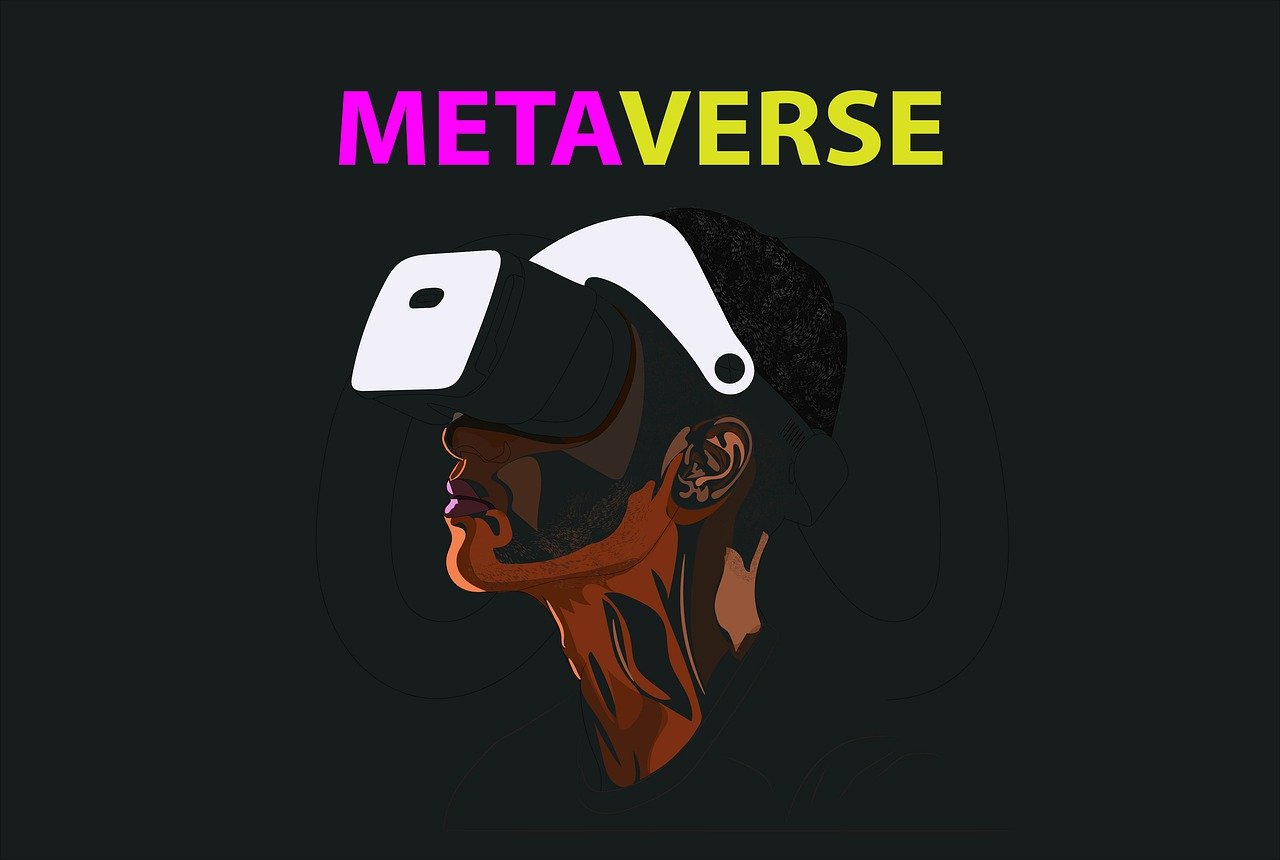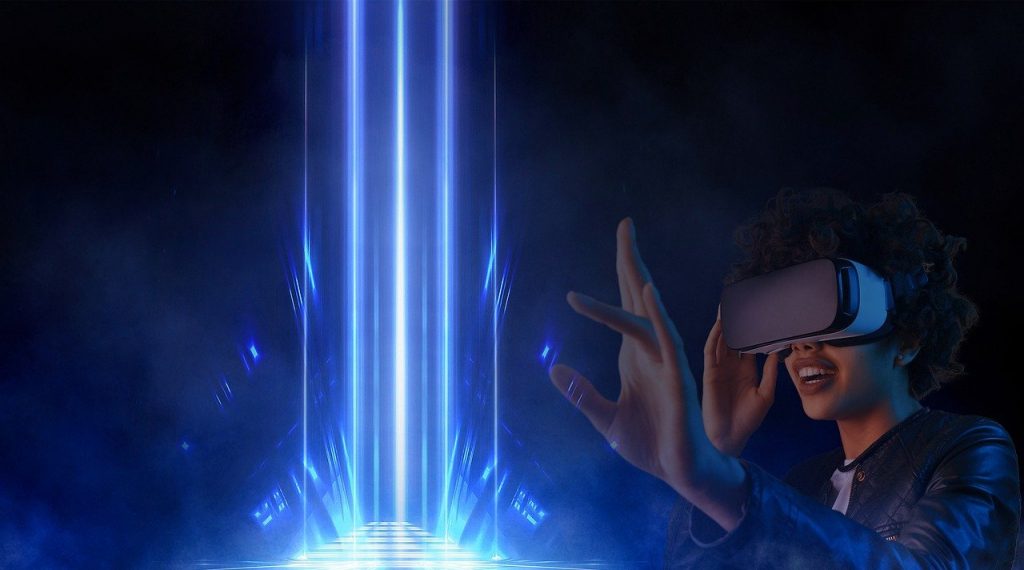
The term “metaverse” is now widely used. Microsoft hailed the “metaverse” as a reason for paying $68.7 billion for Activision Blizzard on Tuesday, arguing that the acquisition will provide “metaverse building parts.” Mark Zuckerberg, the founder of Facebook, has rebranded his social networking firm Meta after investment in the metaverse. For years, Google has been developing metaverse-related technology. Apple is working on comparable devices as well.
But, precisely, what is the metaverse? Is something like this even possible? Everything you need to know about it is right here.
What exactly is the metaverse?

The metaverse combines two long-standing ideas: virtual world and a computerised second life.
For generations, technologists have predicted a time when our virtual lives will be as important as our real ones. In theory, we’d spend a lot of time communicating with our friends and coworkers in virtual space. As a result, we’d spend money on costumes and stuff for our virtual avatars there as well.
Virtual world serves as a cloud infrastructure for leading a second life online in what tech people like Mr. Zuckerberg refer to as the metaverse. Virtual reality involves wearing a headset that actively involves you in a three-dimensional environment.
According to Matthew Ball, a money manager and expert on the subject, the metaverse is the fourth wave of computing, preceding mainframe, personal, and mobile computing.
He described the metaverse as “going towards what some term ambient computing.” “Rather than using the computer, it’s about being within the computer.” It’s about always being online rather than the internet.”
Is there a metaverse in gaming already?
To some extent, a metaverse already exists in games. However, there is one caveat: it is primitive.
Some social aspects of the metaverse can already be found in video games. Take, for example, Fortnite, a massive multiplayer shooting game that can be enjoyed on PCs, consoles, and mobile devices. The typical Fortnite gamer spends hundreds of hours in the game, designing their own avatar and fighting and interacting with the avatars of other players. Players can also win virtual money, which they can spend to outfit their avatars with clothing and other items.
In video games, virtual reality is also rather advanced. The PlayStation VR, a $400 virtual reality headgear that plugs into Sony’s PlayStation 4 console to play virtual reality games, was released in 2016. Sony announced a second-generation headgear for the PlayStation 5 earlier this month, but no release date was given.
But those were only stepping stones on the way to the full metaverse, which is continuously evolving. Fast internet connectivity, sophisticated virtual reality headsets, and a vast audience of gamers, according to technologists, have made it easier to live in a highly animated, realistic 3-D simulation.
What is Activision Blizzard’s metaverse strategy?
To be honest, not a lot.
Activision Blizzard is recognised for creating online games with a metaverse dimension, in which users spend hundreds of hours creating communities within the games. World of Warcraft, a role-playing game introduced in 2004, required players to work together online to complete tasks in order to strengthen their digital avatars by gathering goods such as weapons and armors.
However, the firm hasn’t ventured into virtual reality. It has largely created games for PCs and consoles, but has yet to make a virtual reality title.
What is Microsoft’s metaverse strategy?
Microsoft’s metaverse technology is still in its early stages.
For several years, Microsoft has been working on the HoloLens, a $3,500 headset that displays digital holograms, with a focus on commercial and government applications. The device is linked to virtual reality, which some engineers believe will become a part of the metaverse in the future.
After the Sony PlayStation, Microsoft also built the Xbox, which is the 2nd most popular video game console.The Xbox, on the other hand, has been glaringly absent from the virtual reality gaming arena, unlike the PlayStation.
Getting into Metaverse and making money
People who buy or trade digital commodities on blockchain-based networks must use cryptocurrencies, despite the fact that many metaverse services offer free accounts.
Several blockchain-based services, such as Decentraland’s MANA and The Sandbox’s SAND, require Ethereum-based crypto tokens to purchase and sell virtual assets.
Players can trade NFT artworks or charge for admission to a virtual show or concert in Decentraland. They can also make money by exchanging land, which has seen a significant increase in value in recent years.
Users can earn money on Roblox by charging other users for entry to their games.
Also Read Scope of Digital Marketing 8 Things you should know about SEO and SEM 12 things you didn’t know about LinkedIn
The future of Metaverse
It’s unclear how realistic a true metaverse that perfectly mirrors actual life can be or how long it’d take to create.
Many blockchain-based metaverse platforms are still working on Augmented Reality (AR) and Virtual Reality (VR) technologies that will allow users to completely engage with the environment.
PwC, a worldwide accounting and advising firm, estimates that virtual reality and augmented reality would enhance the global economy by $1.5 trillion by 2030, up from $46.5 billion in 2019.
Facebook Inc (FB.O), Alphabet Inc-owned (GOOGL.O) Google, and Microsoft Corp (MSFT.O) are all investing in cloud computing and virtual reality companies in anticipation of the industry’s expansion.
Some cautionary notes
In a blog post published on the Niantic website on August 10, 2021, Pokémon Go inventor John Hanke referred to the metaverse as a “dystopian horror.”
“A lot of people these days, including some of the greatest names in software and gaming, appear to be very eager to bring this near-future concept of a virtual environment to reality,” Hanke wrote, referring to the central premise of the popular novels by Gibson and Cline. These novels, on the other hand, acted as forewarnings of a dystopian rise of computing gone awry.”
Louis Rosenberg, the developer of AR, is one of the massive red flags. Rosenberg writes for Big Think that it could be a “dystopian stroll through the neighbourhood.”
“After all, the ‘civilised society’ experience is rapidly disintegrating, primarily because we each live in our own digital bubble, with everyone being fed personalised news and information (and even lies) suited to their own particular ideas.” This reinforces our prejudices and solidifies our beliefs. But, at the very least, we can now enter a public arena and share some sort of shared experience in a shared reality. That, too, will be gone with AR,” argues Rosenberg.
By the time the metaverse becomes popular, technologies like Starlink may be widely available to send high-speed data to the world’s most remote locations. However, even if the reach expands, the metaverse may still struggle to attract new users.


